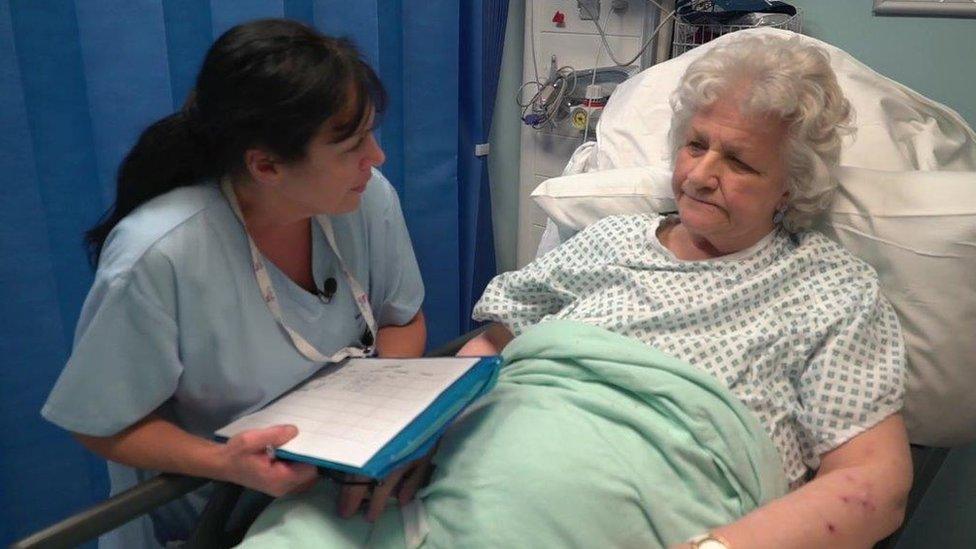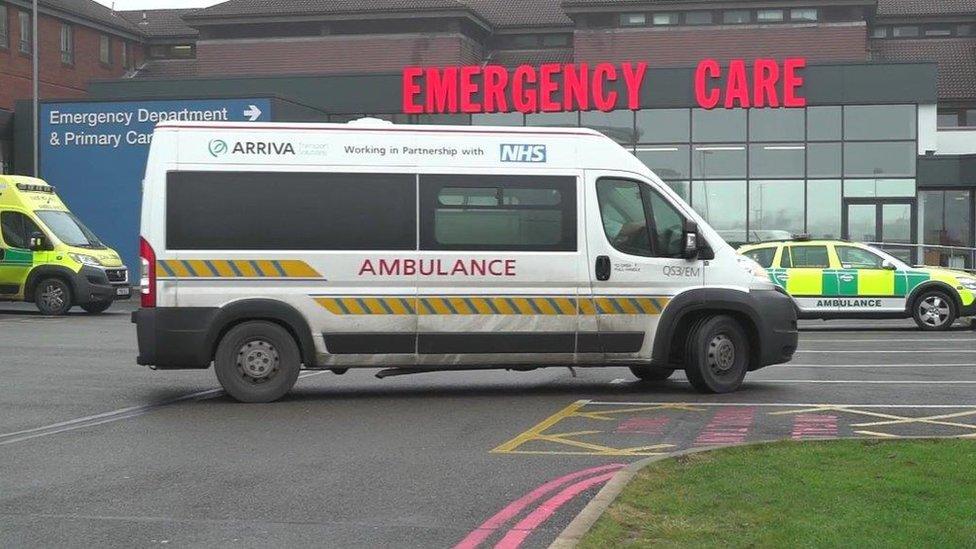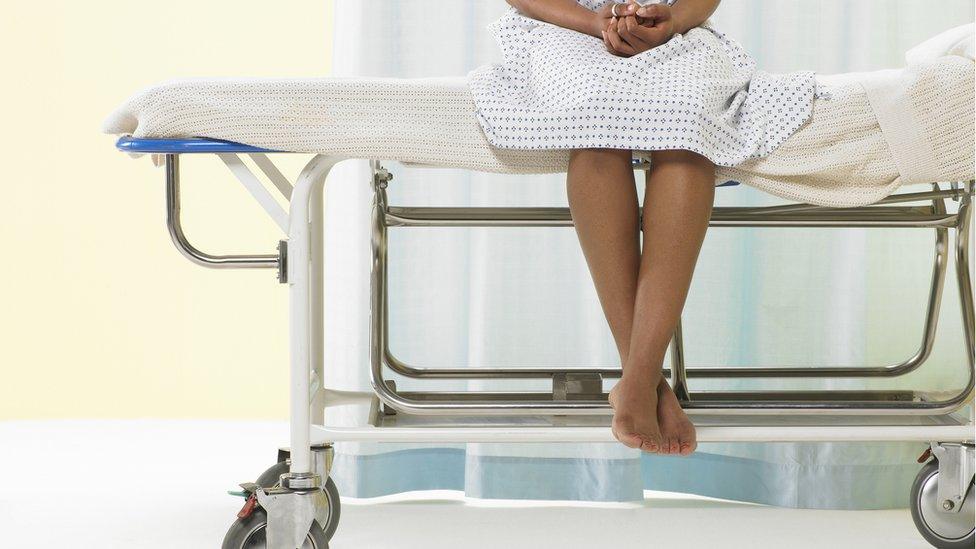Hospital proving patient waits can be cut
- Published

It's a familiar theme, highlighted weekly with winter setting in - the stresses and strains across the NHS.
The delays moving medically fit patients out of hospital beds and back to their communities because of social care problems have been well documented.
BBC research published on Wednesday underlines the scale of the delays finding beds for new patients coming through hospital front doors.
From 2.7% of all emergency admissions in English hospitals in 2010-11, the proportion of patients enduring waits of more than four hours before beds could be found had risen above 11% by 2015-16.
The trend was described as "deeply worrying" by NHS Providers, which represents trusts.
All this paints a picture of a hospital system clogged up with delays throughout the process of assessing, treating and discharging patients.
Bed occupancy in many trusts is above the 85% level recommended as a safe maximum.
But the experience of one hospital trust suggests there are realistic solutions.
Sherwood Forest Hospitals Foundation Trust, in the East Midlands, was one of the worst performers in England two winters ago.
On one day, there were 17 patients who had spent 12 hours or more on trolleys waiting for beds to be made available.
The proportion of patients treated or assessed within four hours was 88%, well below the 95% target.
The trust was in special measures and, by its own admission, struggling.
A new management team was determined to work out what was going wrong and make a significant improvement for patients.
Focusing on patient flow and the emergency system were repeatedly stressed as top priorities for staff.
The trust could not do it alone, and co-operation with local community leaders was sought.
Local GPs were encouraged to monitor those elderly patients who were most at risk, with every effort made to meet their care needs at home and reduce visits to hospital.
The fruits of that collaborative approach can be seen in the main trust hospital, King's Mill in Mansfield.

A bold, bright sign saying: "Emergency Care" guides all patients to the same entrance.
Once inside the door, you find a primary care centre close to where people are first seen by triage nurses.
GPs are on hand to deal with patients who are not seriously ill or injured.
That reduces the flow of people into the emergency department.
Inside the hospital, social care representatives sit alongside NHS staff.
Along with other care workers funded by the local clinical commissioning group, they have a relentless focus on moving elderly patients out of the hospital once they are fit to for discharge.
Three meetings per day closely monitor bed occupancy, with the aim of leaving some beds free overnight ready for the morning influx of new cases.
Dr Andy Haynes, executive medical director, uses a phrase familiar in sporting circles to describe their philosophy - "marginal gains".
That means a series of small changes that collectively deliver better results.
Dr Haynes says: "It's in the context of removing the usual institutional barriers, so we've thought, 'What is best for patients here?'
"These little things, when you join them up and line them up, deliver a significant change."
The stats at Sherwood Forest, which came out of the special measures regime in November, tell their own story.
Average stays in hospital have been reduced. The number of long trolley waits is dramatically lower.
In the past few weeks, more than 96% of people coming into the emergency department have been treated or assessed within four hours.
That has been achieved even with higher numbers arriving at the front door.
Nobody at Sherwood Forest thinks they have found all the answers. They know there could be a difficult winter ahead.
But they feel they have learned lessons that could be relevant to all hospitals.
- Published7 December 2016
